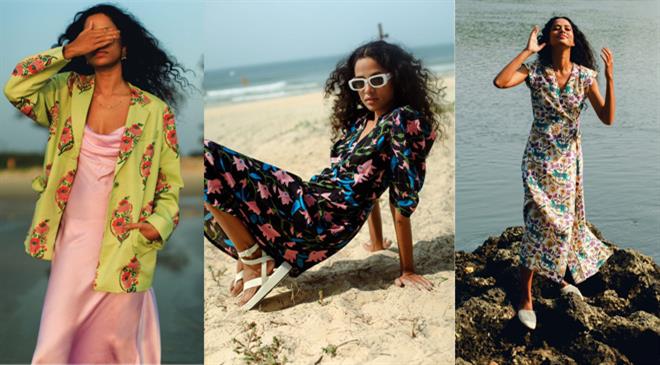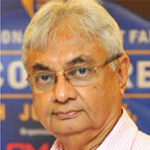
Gauri Verma
Co-Founder
Label - The Jodi Life
Anybody can wear what they want to and it’s the future
THE JODI LIFE is an Indian fashion label that creates ready-to-wear for women and men, as well as a variety of accessories in bright colours and graphic motifs. In an Interview with Fibre2Fashion, co-founder Gauri Verma discusses the inspiration for collections, cultural representation and gender-fluid fashion.
Fibre2Fashion: How did you and your co-founder connect? And when did your love affair with design begun?
Gauri Verma:
Karuna Laungani (also a co-founder of JODI) and I used to be fashion stylists with Elle India.That’s where we met in 2013. Karuna was the senior assistant fashion stylist, and I was a fashion assistant. We both realised that we connect on the fact that we both love handicrafts immensely, and which is why as soon as we left Elle, we decided to start something together. And that’s how JODI was born.
F2F: Where do you get your ideas for hand-drawn prints and trendy silhouettes?
GV:
What we make is inspired by our travels. We both love traveling. The main source of inspiration is also the handicraft itself. I also feel like we wanted to just show handicrafts in a more modern eclectic way, rather than the traditional way. So, our inspiration lies in pretty much everything. We love home decor. I think India is home to boundless number of crafts, and it’s an infinite treasure trove. So just seeing, exposing ourselves to all these processes has really inspired us. When we travel around, we are exposed to different cultures, and this helps us.
F2F: What are the biggest changes you foresee in the world of fashion as a result of the pandemic?
GV:
We have always been a brand which has an online presence, and we’re now focusing a lot more in terms of our reach online. Because, before the pandemic, we used to focus a little bit offline too. But for the fashion industry, the large change is going to be the imbibing technology with fashion and that is where the future is.
F2F: How essential is Indian cultural expression at a time when the globe is becoming more westernised?
GV:
Any cultural representation is important. I don’t think modernisation is at the cost of a non-representation of a culture as long as you can modernise culture specific to where they are from. That is what is important. And keeping in mind what our traditions are, what our history is actually, what our cultural history is, I do feel like it’s extremely important to keep retelling those stories and return them in a way where they are relevant for the newer generation. It helps to connect more deeply with who you are. It is like an instinctual connection that anybody already has with things that are home to them.
F2F: Do you believe in the concept of sustainable fashion and how viable is sustainability in fashion space?
GV:
I don’t think sustainable fashion is a concept; it is the need of the hour because fashion is considered to be one of the most polluting industries today. But it is an important industry; it is a huge industry. So, you have to bear in mind that it is going to be there and, it is to some extent a form of art, a form of communication. So, production practices have to be way more sustainable. Brands need to become sustainable today in any which way, and it is important too as looking at the present climate of the world, it would be completely foolish to not pay heed.
F2F: What is your take on gender fluid garments, and what’s the scope for this type of fashion going forward?
GV:
Fashion is democratic and people should be able to dress in whatever way they want to. Freedom of expression is important. Who chooses to wear what should be a personal choice. I’m very excited to see that the world is getting a lot more open, where you see a lot more people styling themselves more freely and showing themselves more freely than ever, ever before. It’s because it’s democratized. There are all kinds of clothes in existence, then why not gender-neutral clothing too? I really appreciate our time today, wherein we’re not that boxed up, and anybody can wear whatever they want too. I think it’s the future.
F2F: How do you keep up with the competition? How do you make yourself and your label stand out?
GV:
It’s important to recognise what your own strengths are, and what is your own signature, and be able to reiterate that in whatever way you want to. We can evolve, change and grow. But one has to stay true to your language, and to understand that you need to first be able to identify what your language is, and what do you have to say? What do you have to say differently? Instead of trying to just be like a lot of other brands, it’s important to tell your story. And then you will find like-minded people. If you’re seeing the story, whenever communicating decently, you will find people who resonate with that.
F2F: You are in the fashion industry since long. Is there anything that you want to change in fashion education specifically?
GV:
The Indian education system in itself is extremely flawed. I definitely feel that education can become a lot more practical. There’s almost like a gentrification of design schools which has become like an industry. I don’t know how much of it is a value education. Of course, it doesn’t mean that you shouldn’t study it. Fashion and creativity are inherent to some extent. I know a lot of people who have had no formal education in the industry, and are incredibly creative, and they’re the very geniuses.
F2F: What advice would you like to give to the woman trying to break into the field of fashion?
GV:
Be ready to hustle, and never be afraid to say ‘No’. And I think team building is really important too.

Arun Sirdeshmukh
Pradip Mehta
Abhay Gupta
Gabi Seligsohn
Fanny Vermandel
Bill D’Arienzo
Rahul Mehta
Anurag Batra
Rahul Mehta
Aseem Prakash


20230103183907.png)






_8.JPG)



